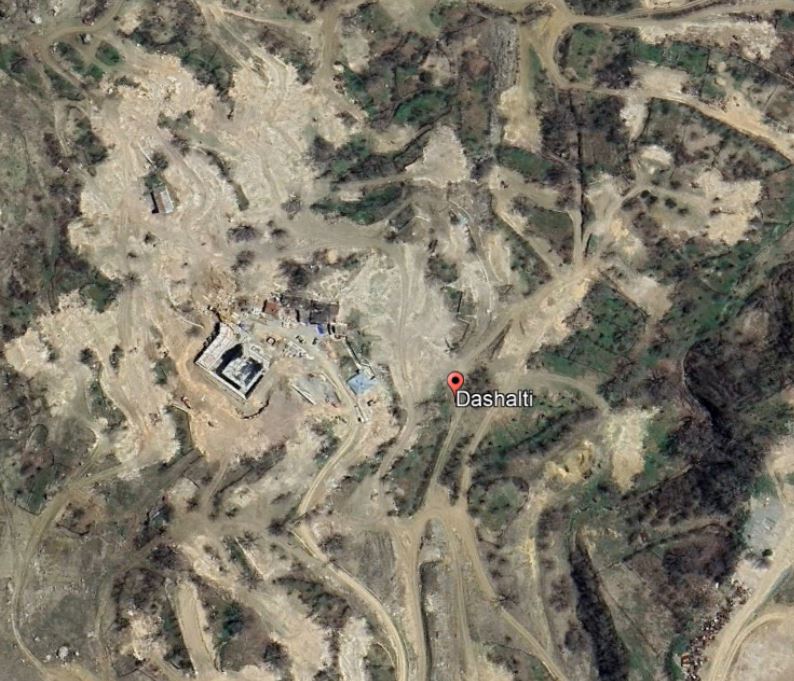Ani Avetisyan
Several reports showing visual evidence of the damage or complete demolition of cultural and religious sites in Nagorno-Karabakh emerged in the past week. Among the destructed areas are the cemetery of Shushi near the Ghazantschetsots church, the Kanach Zham church also in Shushi and, more shockingly, the entire village of Karintak.
Threats to Armenian cultural heritage in Azerbaijan have been voiced by a number of politicians, experts and organizations. In one of its several provisional measures, the International Court of Justice demanded that Azerbaijan take steps to protect the Armenian cultural sites in its territory, and punish the acts of vandalism. Despite the concerns, the Azerbaijani government either declares the Armenian churches and other cultural heritage as Caucasus Albanian, accusing Armenia of adding fake inscriptions on it, or destroys them. Along with the cultural heritage, apparently, an entire Armenian town was bulldozed to the ground.
Karintak
Karintak (called Dashalty by Azerbaijan), a historically Armenian-inhabited village in Karabakh’s Shushi region was captured by Azerbaijan in 2020 Nagorno-Karabakh war. Its population fled to nearby areas or to Armenia.
Reports of damage to Saint Mother of God Church in the village were published online back in 2022. Yet, the newest satellite data shows that the entire village has been destroyed, with the building of the church standing alone in the village center.
Cemetery in Shushi
Caucasus Heritage Watch, a group of researchers mainly from Cornell University, reported in April that the Ghazanchetsots cemetery in the city of Shushi was completely destroyed. The group has previously warned of the ongoing construction in the city that threatens the Armenian cultural heritage.
According to the research group, the demolition marks the first destruction of a cemetery since the International Court of Justice ordered Azerbaijan “to prevent and punish attacks on Armenian cultural heritage.” The process of the demolition of gravestones took several months in late 2023.
The Ghazanchetsots cemetery is the third Armenian cemetery destroyed since the end of the Second Nagorno-Karabakh, with another four damaged. The destroyed cemeteries were located in the villages of Signakh and Mets Tagher. Two of the four damaged cemeteries were in Shushil, the others in Nor Maragha and Vazgenashen.
Shushi: Kanach Zham (St John Baptist Church)
The demolition of the partially destroyed Saint John Baptist Church, famously known as Kanach Zham (Green Church) was also completed between the fall of 2023 and spring 2024. The church was claimed to belong to the Russian Orthodox church, despite having Armenian inscriptions dating back to mid-19th century. The inscriptions in the entrance of the chapel read: “St. Hovhannes Mkrtich Church was built by Shusha townsman baron Hovhannes and Baba Stepanyan Hovnanents in memory of their deceased brother Mkrtich in the year of 1847.”
After the 2020 war, the Russian Orthodox diocese in Baku promised to renovate the damaged church, but instead the church was razed to the ground.
Ghazanchetsots Cathedral
Similar to the case of Kanach Zham, the main Cathedral of Shushi, Ghazanchetsots, built in 19th century was also claimed – without any evidence – to belong to the Russian Orthodox Church. Not long after taking control over the mountainous city, Azerbaijan started the “renovation” of the church, aimed at removing the Armenian traces from it. The church remains under construction until now, with footage and pictures shared by Azerbaijani social media users showing the removal or demolition of several religious symbols from the church, including the well-known angels on the gate of the cathedral.
As the construction continues, the scaffolding around the building does not allow for clear images on the outside of the church, but the cross and the domes of the cathedral have been removed.
Ongoing process
Since the capture of territories in Nagorno-Karabakh in 2020, Azerbaijan has destroyed, partially demolished or damaged a number of buildings and cultural sites in the region. Following the military takeover of the whole of Nagorno-Karabakh in September 2023 and the withdrawal of the Russian peacekeeping forces from the region, the Azerbaijani government got full and uninterrupted access to the region’s Armenian heritage.
Along with the churches and cemeteries, Azerbaijan has already destroyed many residential buildings, aiming to build either new roads or new settlements. In March this year, footage published on Azerbaijani social media showed the demolition of the Karabakh parliament building in the heart of the region’s capital, Stepanakert.
















